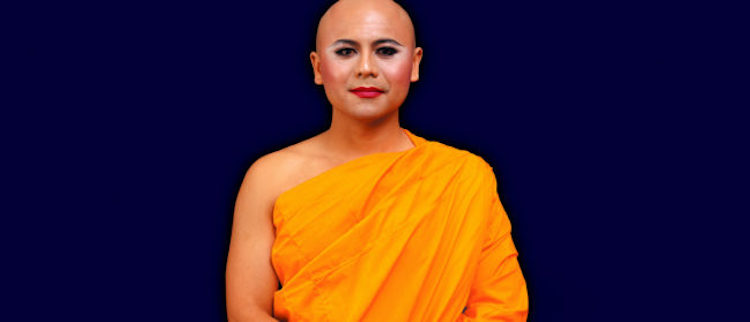
Brian Curtin, one of Bangkok’s leading art critics, has written a superb guide to the Thai art scene, Essential Desires: Contemporary Art in Thailand. Decade by decade, Curtin surveys the artists and institutions at the forefront of Thai contemporary art. The book documents the emergent art spaces of the 1990s, with rare images of exhibition flyers and installation views, and extensive political context.
One of the book’s central arguments is that “questions of nation and nationalism have been unavoidable in accounting for Thai art”, and Curtin considers how artists respond to the problematic state-imposed notion of ‘Thainess’. Manit Sriwanichpoom, Vasan Sitthiket, and Sutee Kunavichayanont, for example, collaborated on group exhibitions that critiqued modern Thai history to some extent, though Curtin argues that their “avowal of problems within the national status quo did not involve a fundamental questioning of its general terms, symbols, concern with appearances or essential desire for unity.”
Noting that Manit, Vasan, and Sutee all supported the anti-democratic People’s Democratic Reform Committee, Curtin contrasts them with more subversive recent artists such as Pisitakun Kuantalaeng and Jakkhai Siributr, who demonstrate a “post-national sensibility characterized by the challenging of the very possibility of national allegiance.” Vasan’s Blue October (ตุลาลัย) and Jakkhai’s 78 are among the many full-page illustrations. Other works illustrated include Miti Ruangkritya’s Thai Politics 3, Araya Rasdjarmrearnsook’s The Class 3 and In a Blur of Desire (ในความพร่ามัวของปรารถนา), Harit Srikhao’s Chosen Boys, Withit Sembutr’s Doo Phra, and (the cover image) Michael Shaowanasi’s Portrait of a Man in Habits.
One of the book’s central arguments is that “questions of nation and nationalism have been unavoidable in accounting for Thai art”, and Curtin considers how artists respond to the problematic state-imposed notion of ‘Thainess’. Manit Sriwanichpoom, Vasan Sitthiket, and Sutee Kunavichayanont, for example, collaborated on group exhibitions that critiqued modern Thai history to some extent, though Curtin argues that their “avowal of problems within the national status quo did not involve a fundamental questioning of its general terms, symbols, concern with appearances or essential desire for unity.”
Noting that Manit, Vasan, and Sutee all supported the anti-democratic People’s Democratic Reform Committee, Curtin contrasts them with more subversive recent artists such as Pisitakun Kuantalaeng and Jakkhai Siributr, who demonstrate a “post-national sensibility characterized by the challenging of the very possibility of national allegiance.” Vasan’s Blue October (ตุลาลัย) and Jakkhai’s 78 are among the many full-page illustrations. Other works illustrated include Miti Ruangkritya’s Thai Politics 3, Araya Rasdjarmrearnsook’s The Class 3 and In a Blur of Desire (ในความพร่ามัวของปรารถนา), Harit Srikhao’s Chosen Boys, Withit Sembutr’s Doo Phra, and (the cover image) Michael Shaowanasi’s Portrait of a Man in Habits.

The book also examines the various galleries and other cultural institutions established over the past three decades (though not MAIIAM, surprisingly). Most notable among these is the state-funded Bangkok Art and Culture Centre, host to a series of large-scale survey shows, including Traces of Siamese Smile (รอยยิ้มสยาม) and Thai Trends (ไทยเท), with their “strained and anxious references to local identity and tradition.” Curtin notes that these bloated ‘prestige’ exhibitions were curated by Apinan Poshyananda, a former artist who is now a senior figure at the conservative Ministry of Culture. In an especially astute observation, he laments Apinan’s “assimilation to the machinery of the state”.
Apinan wrote the last extensive monograph on Thai art, Modern Art in Thailand (copies of which are now scarce). Since then, Steven Pettifor’s Flavours and Serenella Ciclitira’s Thailand Eye have featured profiles of individual Thai artists, though Essential Desires is the first survey of the entire landscape of Thai contemporary art for almost thirty years.
Apinan wrote the last extensive monograph on Thai art, Modern Art in Thailand (copies of which are now scarce). Since then, Steven Pettifor’s Flavours and Serenella Ciclitira’s Thailand Eye have featured profiles of individual Thai artists, though Essential Desires is the first survey of the entire landscape of Thai contemporary art for almost thirty years.


